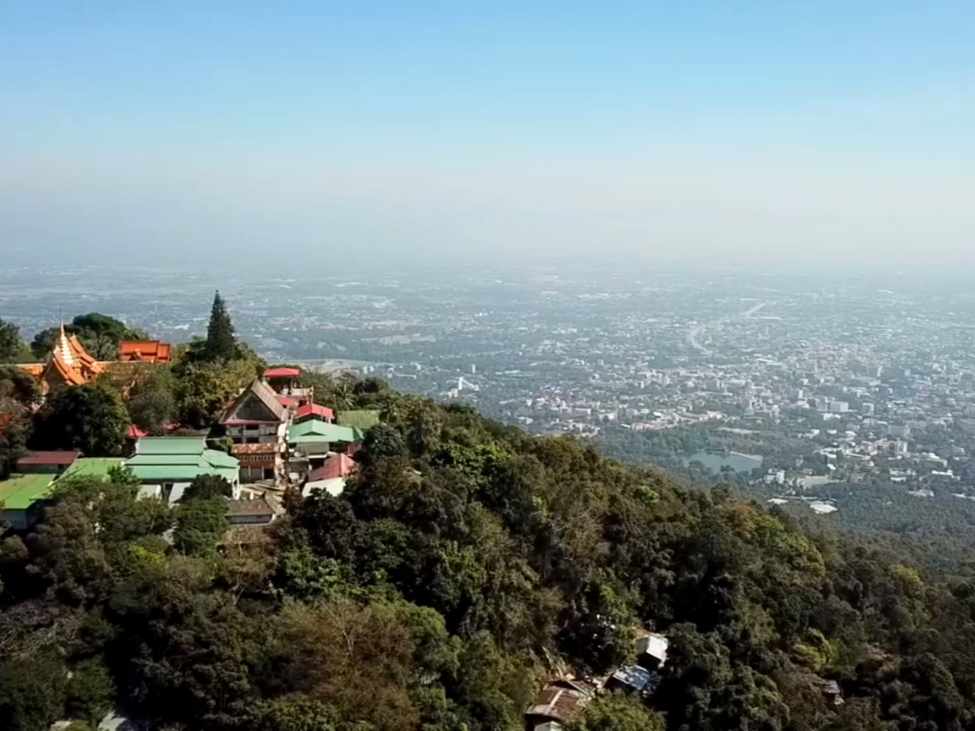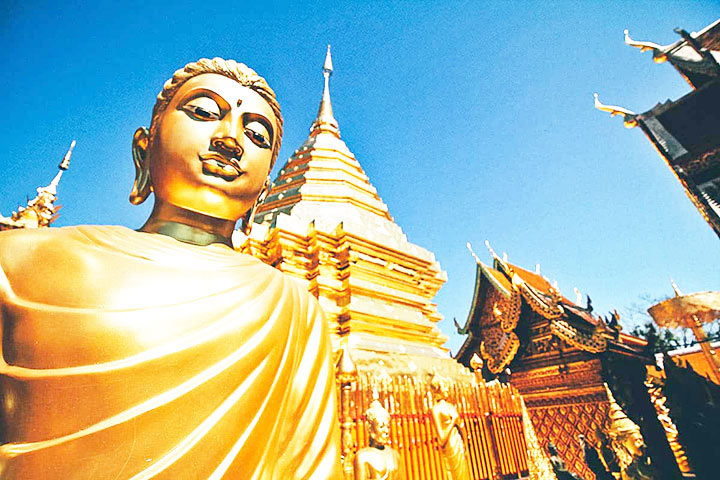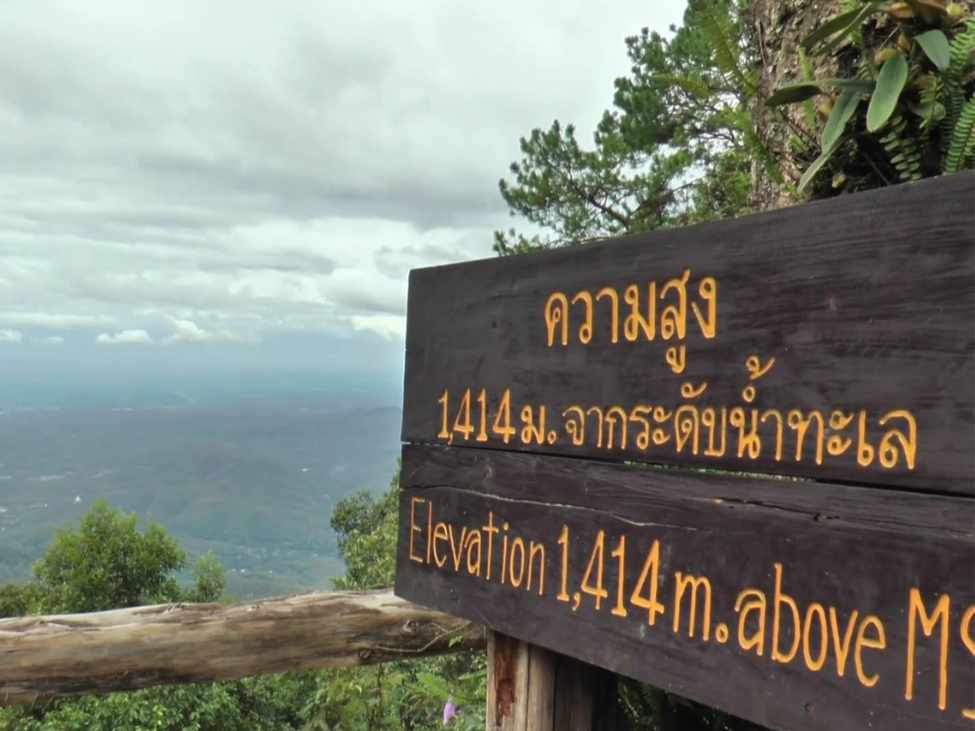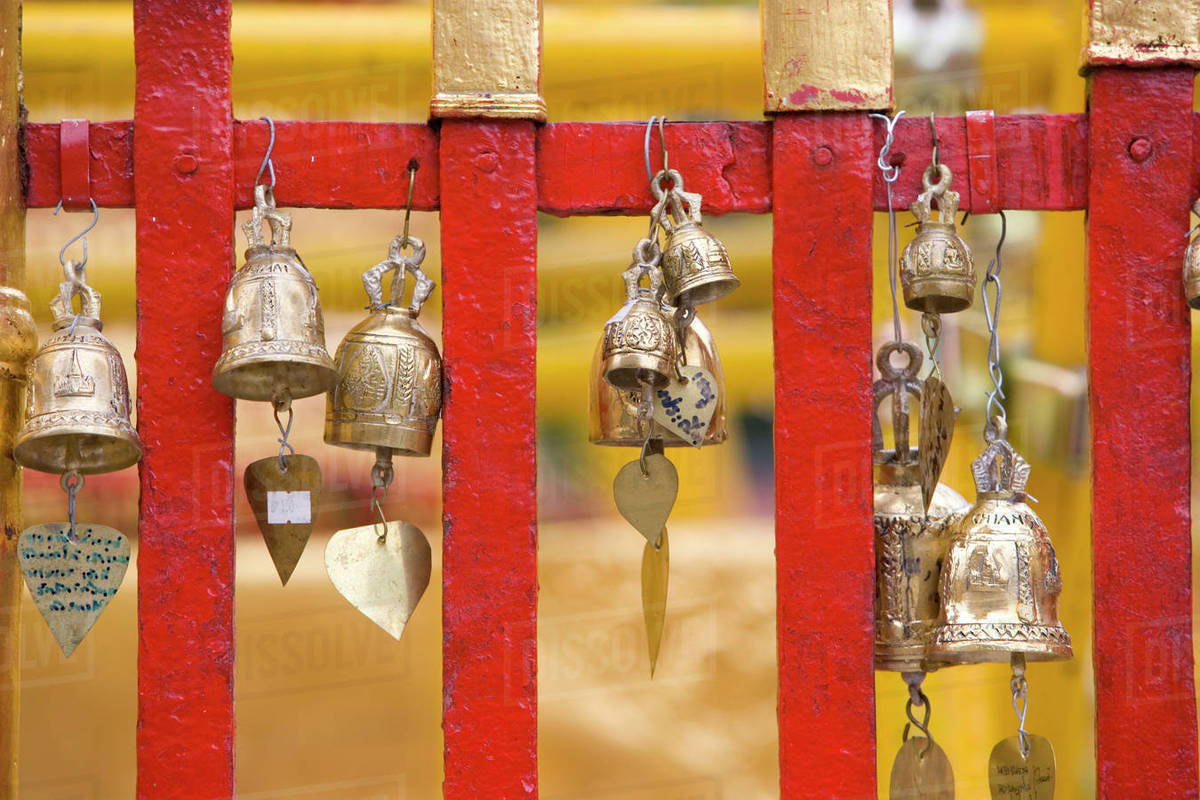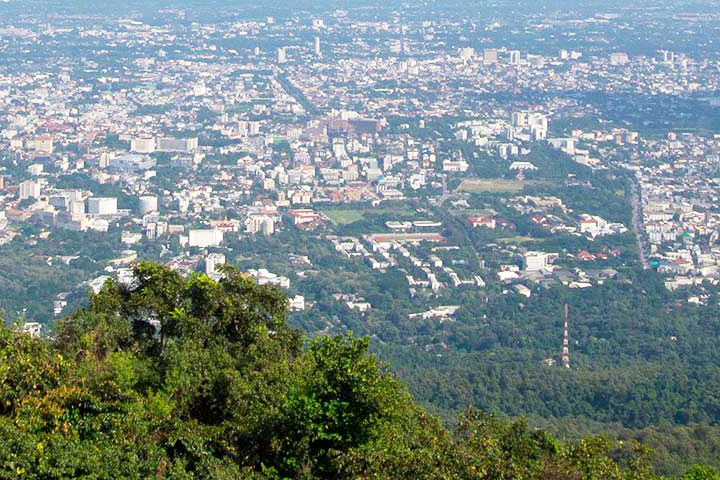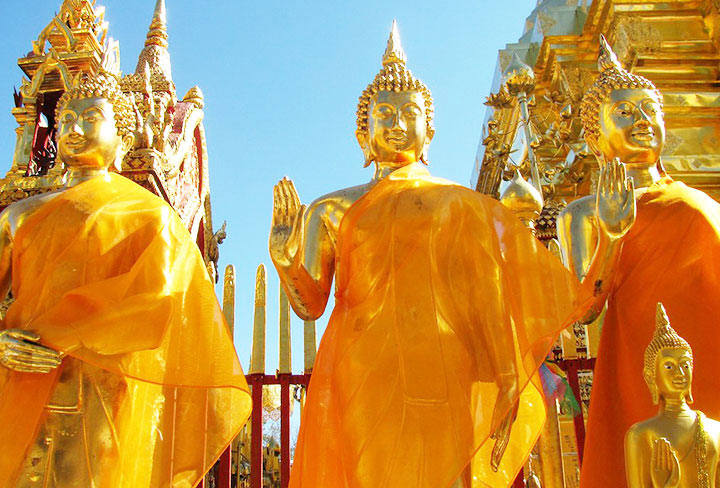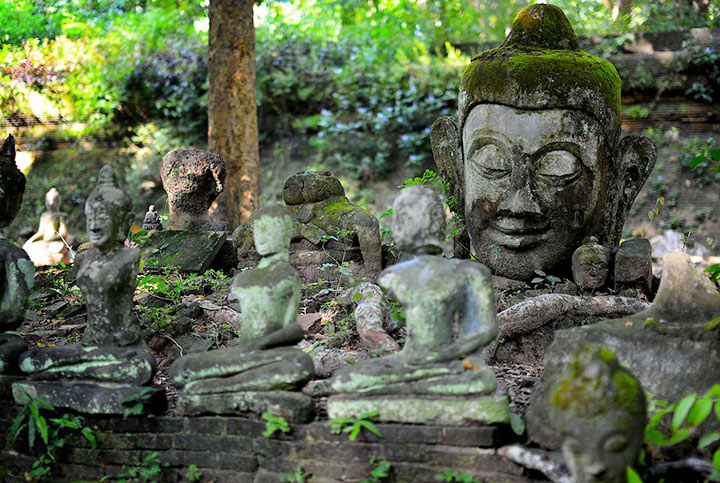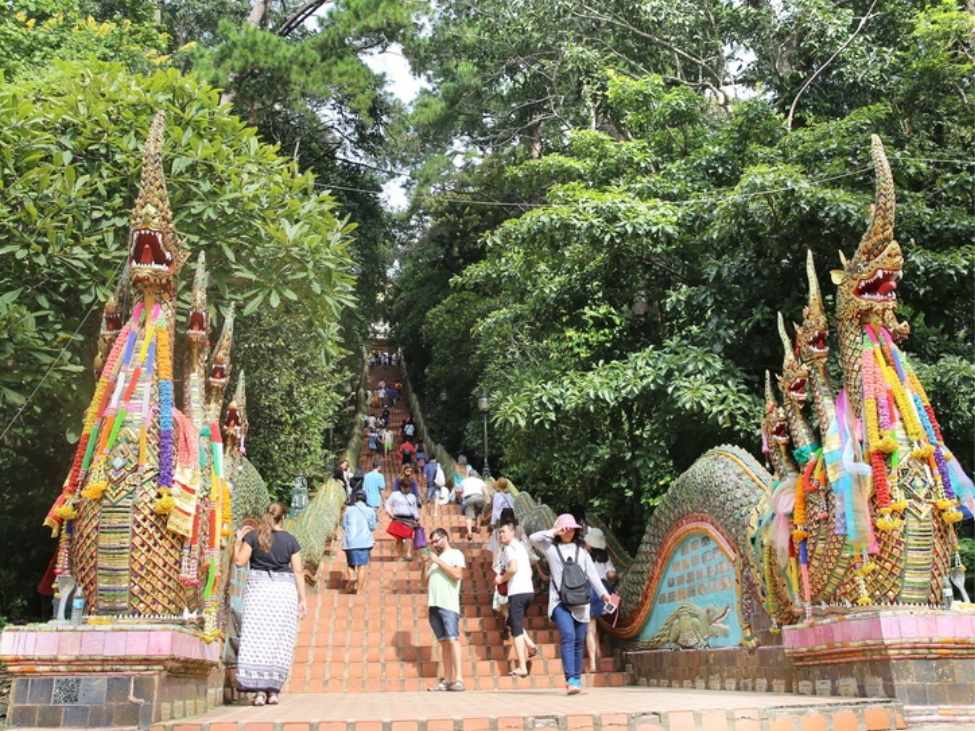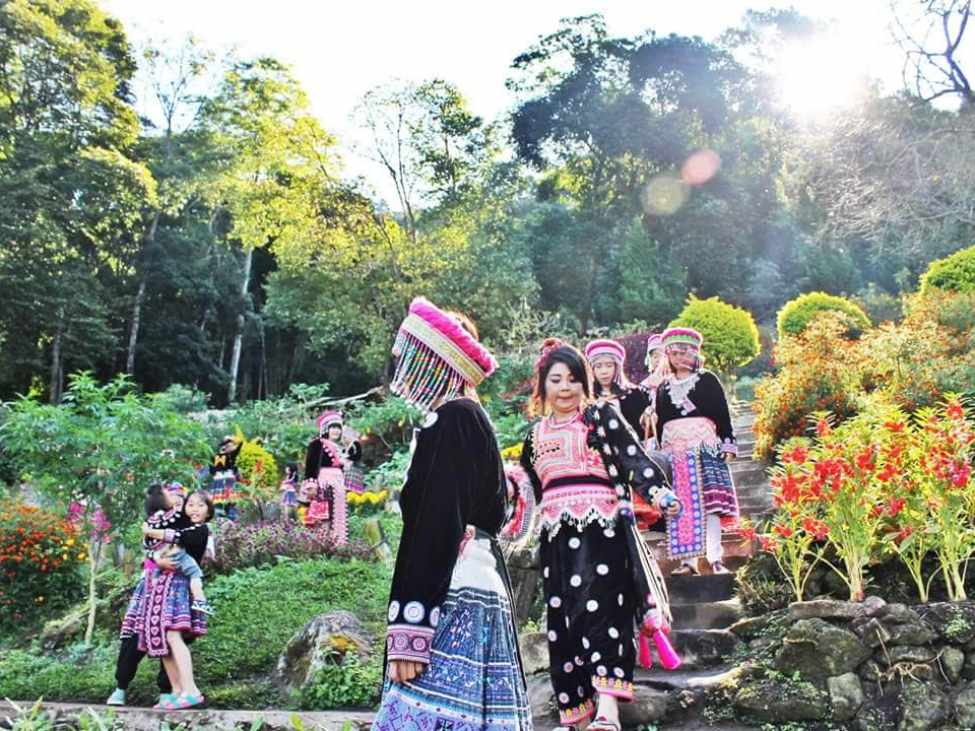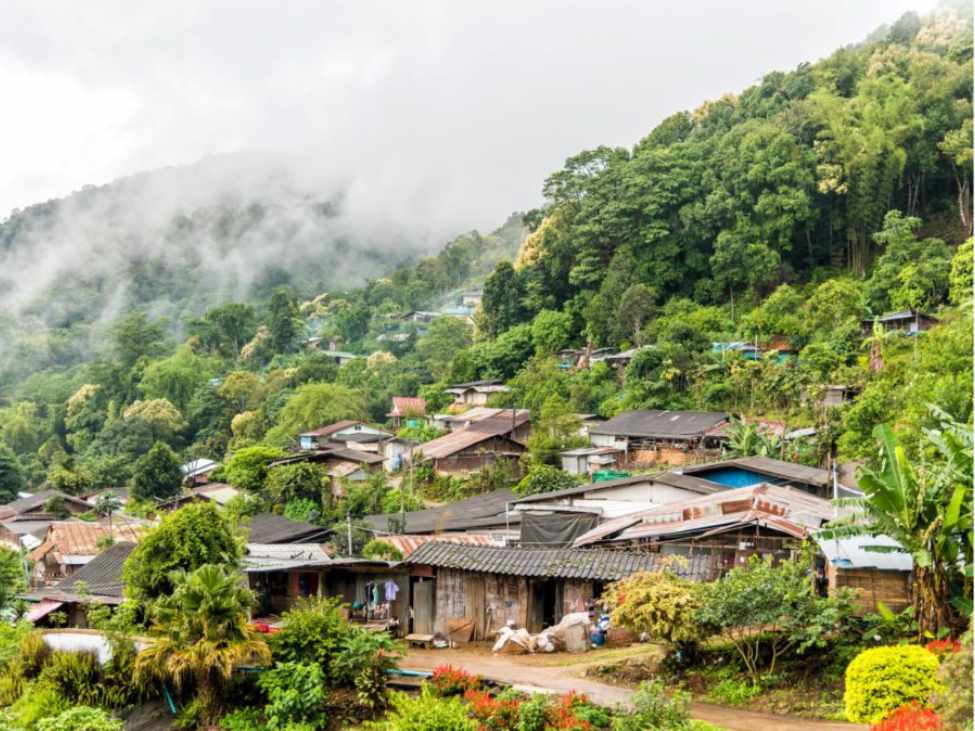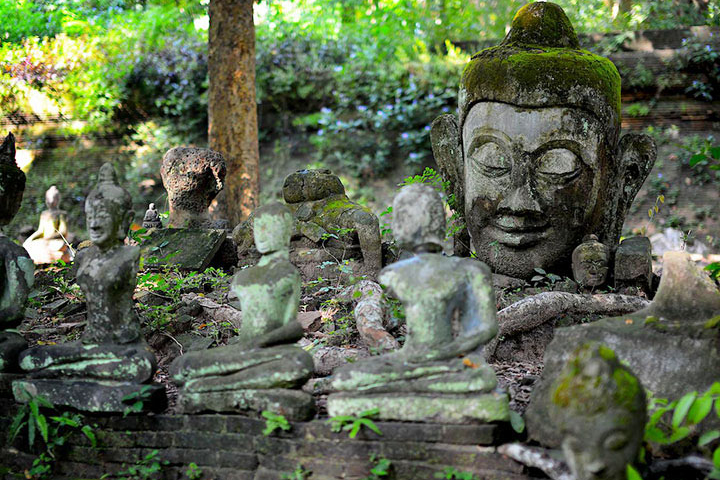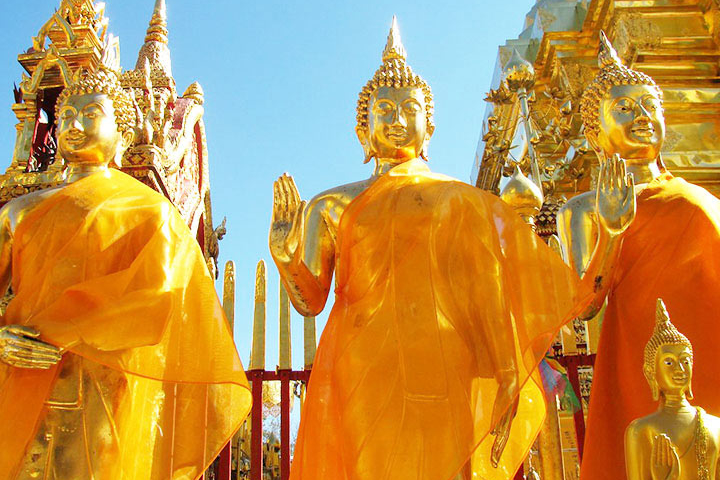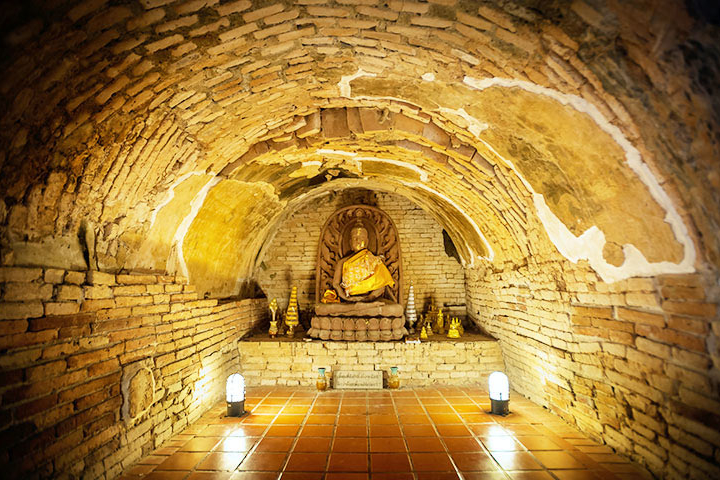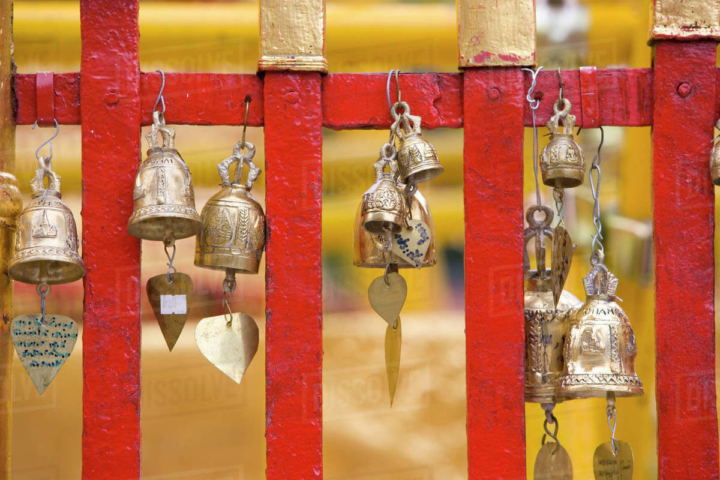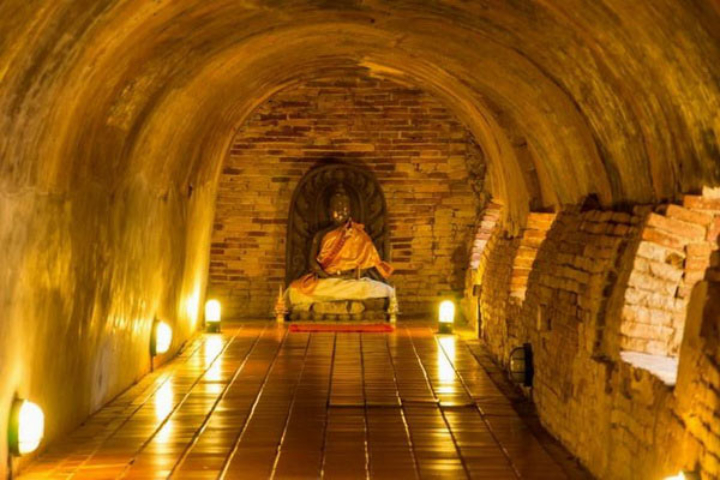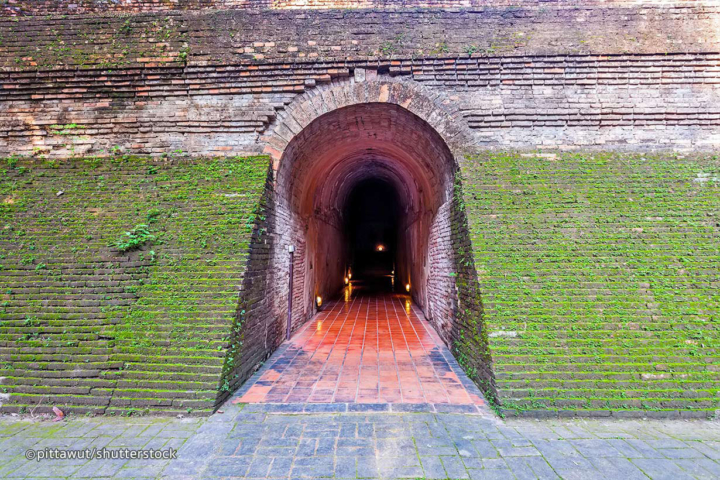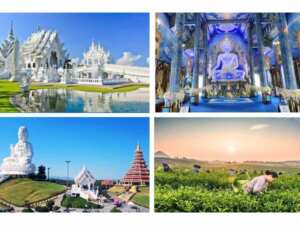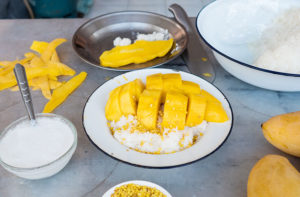Embark on an unforgettable journey high above Old City. On the mountain, Wat Phra That dazzles with its intricate Thai architecture and spiritual significance. Ascend 306 steps alongside our expert guides, unveiling panoramic views of Chiang Mai’s lush landscapes. Immerse yourself in the rich history and sacred aura of this revered temple. Discover the magic that awaits at this iconic Buddhist sanctuary; plan your visit today!
As you enter the temple, you’re mesmerised by its gleaming golden pillars and towering gongs. The ancient artefacts whisper tales of a thriving Buddhist past. In the inner courtyard, gaze upon five-tiered parasols crafted from pure gold—icons of opulence and grandeur. This historical journey envelops you in the vivid tapestry of Thai heritage and spirituality. Beyond the initial awe, you’ll notice the temple’s layout, which includes multiple halls, shrines, and statues that reflect centuries of devotion, each element carefully preserved to maintain its original splendour.
Nestled atop the majestic Doi Suthep mountain, Wat Phra That dazzles as a spiritual and cultural jewel of Chiang Mai, Thailand. This iconic landmark captivates visitors from around the globe with its breathtaking architecture and profound significance in Thai Buddhism. Perched at an elevation of 1,676 meters above sea level, the temple not only offers a serene escape from the bustling city below but also serves as a gateway to the surrounding Doi Suthep-Pui National Park, where diverse wildlife and ancient forests add to the site’s natural allure.
A Journey Through History
The Legend of Doi Suthep
Doi Suthep, a legendary marvel since the 14th century, weaves a tale of faith and awe. A revered Buddha relic travelled from India atop a majestic white elephant—a powerful Thai symbol of strength and wisdom. After trumpeting three times, the noble beast peacefully passed away, inspiring the creation of this magnificent temple to honour its legacy. This myth is rooted in Lanna Kingdom folklore, where the elephant’s journey is said to have been guided by divine forces, leading King Kuena (also known as Keu Naone) to establish the temple in 1383 as a testament to Buddhist reverence and royal piety. The story underscores the deep connection between nature, spirituality, and monarchy in Thai history, making the site a living embodiment of these intertwined elements.
Historical Significance of Doi Suthep
- Foundation Year: 1383
- Cultural Impact: The temple has served as a pilgrimage site for centuries, attracting both locals and tourists.
- Religious Importance: It houses a revered relic of the Buddha, making it a focal point for Buddhist worship.
Over the years, the temple has undergone expansions and restorations, particularly during the 16th century under subsequent Lanna rulers, solidifying its role as a centre for religious ceremonies and community gatherings. Today, it remains a symbol of Chiang Mai’s Lanna heritage, influencing local festivals like the annual pilgrimage during Visakha Bucha Day, where thousands ascend to pay homage.
Architectural Wonders of Doi Suthep
Perched majestically, Doi Suthep dazzles with its intricate Lanna architecture, a testament to ancient craftsmanship and cultural depth. This temple not only embodies Thailand’s rich history but also radiates spiritual serenity, making it an unmissable haven for those eager to explore the mesmerising allure of Buddhist sanctuaries.
- Intricate Carvings: Each detail tells a story of the region’s rich cultural tapestry.
- Vibrant Murals: The temple walls are adorned with colourful murals depicting Buddhist teachings.
- Golden Stupa: The temple’s centrepiece is a striking golden stupa that shines brilliantly in the sunlight.
Key Architectural Features of Doi Suthep
| Feature | Description |
|---|---|
| Location | Situated on Doi Suthep mountain, approximately 15 km from Chiang Mai. |
| Elevation | 1,676 meters above sea level, offering breathtaking views of the area. |
| Architectural Style | Exemplifies Lanna style, featuring intricate designs and a prominent golden stupa. |
| Religious Significance | Houses a revered relic of the Buddha, attracting pilgrims and tourists alike. |
Essential Visitor Information for Doi Suthep
Optimal Visiting Hours
- Best Times: Early morning or late afternoon to avoid crowds and enjoy cooler temperatures.
Dress Code for Doi Suthep
- Modest Attire: Shoulders and knees must be covered to respect the sacredness of the site.
Transportation Options to Doi Suthep
- Songthaew: Easily accessible by red truck taxis.
- Hiking: A scenic hike from the base of the mountain is also an option for the adventurous.
Experiencing the Temple of Doi Suthep
Discover the magic of Doi Suthep, where every step is an adventure. Trek through lush landscapes or glide up on a funicular to reach this sacred summit. The air hums with spirituality as Buddhist monks and intricate shrines invite contemplation. Whether you’re drawn by Chiang Mai’s history or seeking serenity away from Bangkok’s bustle, Wat Phra That Doi Suthep promises a captivating blend of culture and nature that will linger in your memory long after you leave.
Activities to Enhance Your Visit to Doi Suthep
- Participate in Ceremonies: Engage in traditional Buddhist rituals, such as offering flowers, incense, and candles at the altar.
- Photography: Capture stunning views of Chiang Mai and the surrounding mountains, especially during sunrise or sunset.
- Guided Tours: Consider joining a guided tour to learn more about the temple’s history, architecture, and cultural practices.
- Explore the Surroundings: The nearby Doi Suthep-Pui National Park offers beautiful trails and diverse flora and fauna.
Pros and Cons of Visiting Doi Suthep
| Pros | Cons |
|---|---|
| Stunning architecture and rich cultural heritage. | Can be crowded, especially during peak tourist seasons. |
| Breathtaking views of Chiang Mai from the temple grounds. | Steep climb or drive to reach the temple, which may be challenging for some visitors. |
| Opportunities to engage in traditional Buddhist practices. | Limited amenities and facilities at the temple itself. |
| Access to nearby hiking trails and natural beauty. | Entrance fees may apply for certain areas. |
Top Tips for Visiting Doi Suthep
- Plan Your Visit: Aim to arrive early in the morning or late afternoon to avoid the crowds and enjoy a more peaceful experience.
- Dress Appropriately: Ensure you wear modest clothing that covers your shoulders and knees to respect the temple’s customs.
- Stay Hydrated: Bring water, especially if you plan to hike in the surrounding national park.
- Respect Local Customs: Be mindful of cultural practices and maintain a respectful demeanour while visiting.
- Bring a Camera: The views are breathtaking, and you’ll want to capture the beauty of the temple and its surroundings.
Conclusion
Venturing to Doi Suthep transcends a simple temple visit; it’s an immersive dive into Thailand’s vibrant cultural and spiritual tapestry. Marvel at its stunning architecture, soak in breathtaking views, and find moments of personal reflection. This sacred site promises an unforgettable adventure for history buffs, nature enthusiasts, and seekers of spiritual wisdom alike; Doi Suthep offers something extraordinary for every traveller. Its enduring legacy as a pilgrimage destination continues to inspire, blending ancient legends with modern-day reverence in a way that’s both profound and accessible.
But that’s not all! The tour also takes you to the U-Mong Temple, in the forest. You will learn about its fascinating history and might even see its resident cows. Wat Umong, also known as Wat Umong Suan Puthatham, is a 700-year-old forest monastery founded around 1296 by King Mengrai, the first king of the Lanna Kingdom and founder of Chiang Mai. Legend has it that it was built for a revered but eccentric monk who preferred wandering the forests for meditation, leading to the creation of its unique underground tunnels adorned with Buddha images and faded murals. These tunnels, cool and dimly lit, provide a tranquil space for reflection, while the surrounding wooded area is home to wandering deer, chickens, and yes, those quirky resident cows that add a touch of rustic charm. As a meditation centre, it attracts practitioners from around the world, offering a stark contrast to the elevated grandeur of Doi Suthep with its earthy, hidden vibes—perfect for those seeking a quieter, more introspective side of Chiang Mai’s Buddhist heritage.
Embark on an unforgettable adventure to Doi Suthep by immersing yourself in the vibrant culture of Chiang Mai, Thailand. Visit Wat Phra That Doi Suthep, a stunning temple atop the mountain, offering breathtaking views and intricate architecture. Engage with resident monks and partake in traditional rituals for an authentic taste of Thai customs. Witness the golden spire glisten by day or soak in serene evening prayers. Enhance your journey by exploring nearby treasures, such as the Bhubing Palace and the Hmong hill tribe village. Whether you trek up or ride the funicular railway, prepare for a captivating blend of history and spirituality that will be a highlight of your time in Chiang Mai. These additional spots, like the royal winter residence at Bhubing Palace with its beautiful gardens or the vibrant markets of the Hmong village, provide cultural depth without overshadowing the main attraction, rounding out a full day of exploration in this enchanting region.
Meeting & Pick-up
Pick up is between 5:PM–5:45PM
We pick up all travellers who stay near Old City Chiang Mai free of charge. Extra costs apply for pick-ups outside the area.




